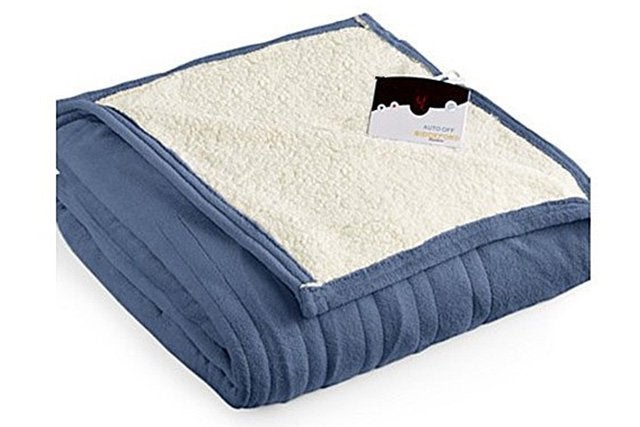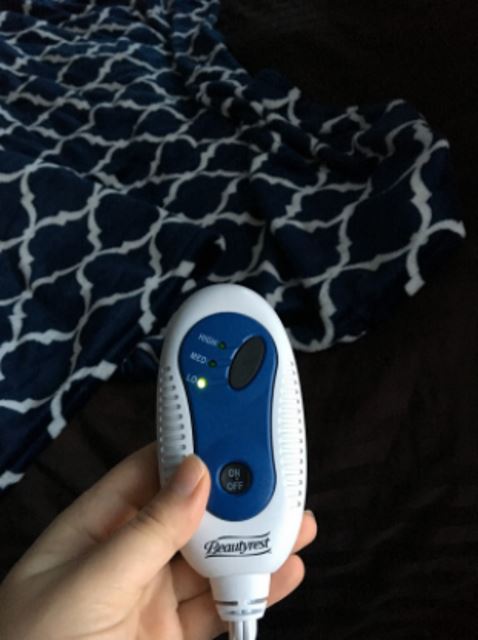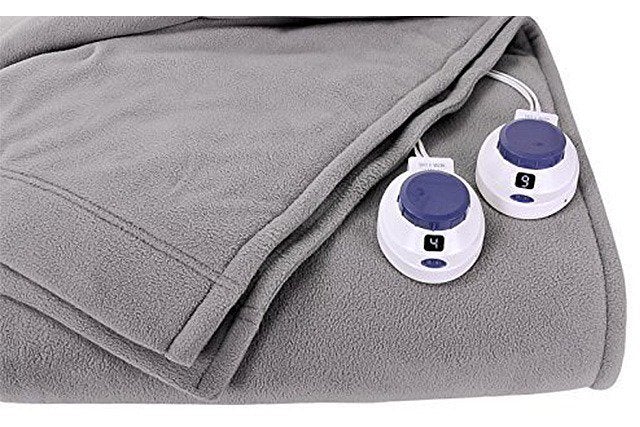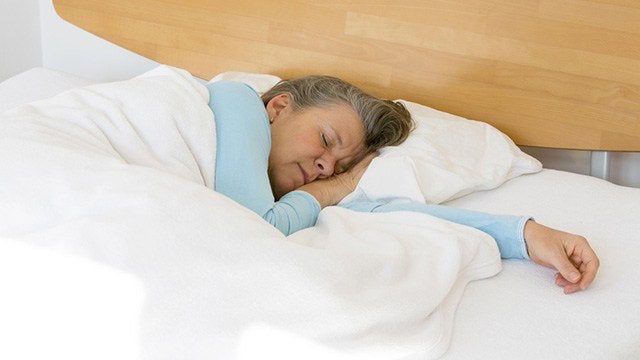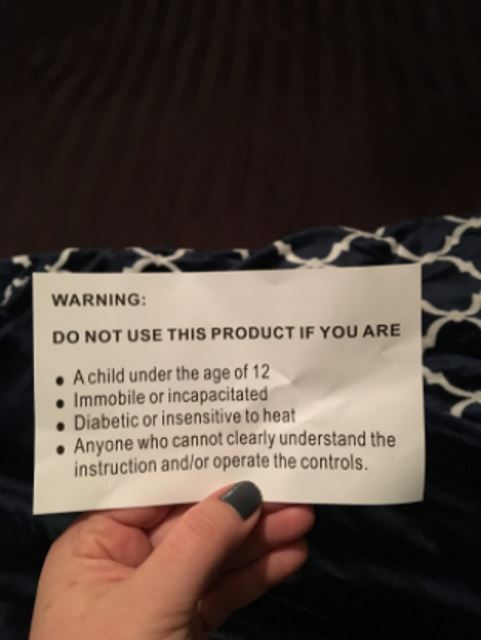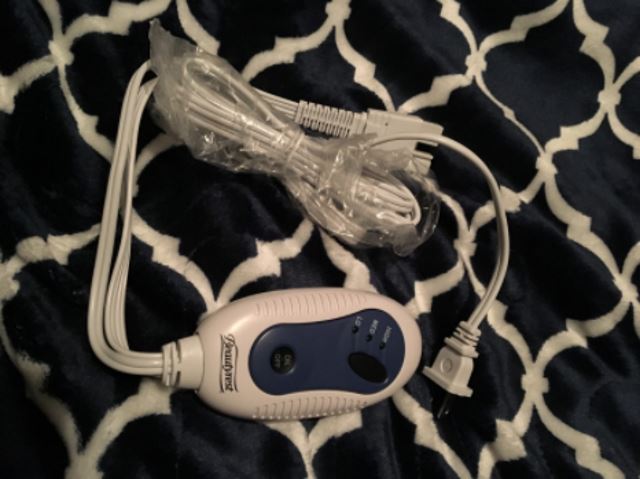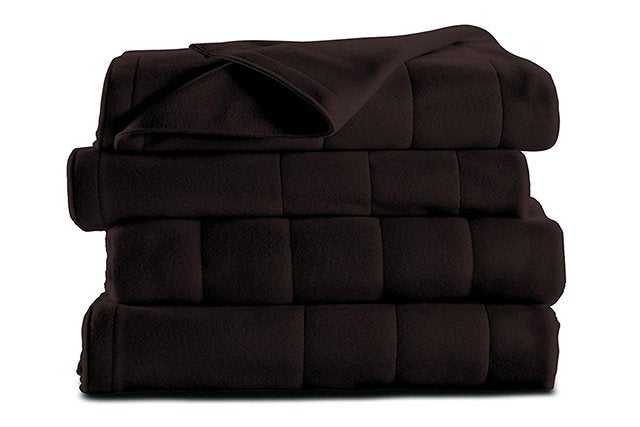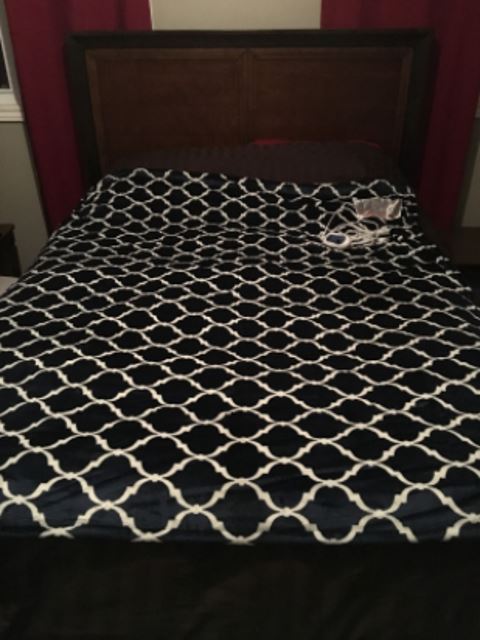You may think it’s intuitive for people to remember to take precautions with any item that uses electricity. In fact, it’s commonplace to let it slip the mind to handle electrical products with care because they’ve grown accustomed to the creature comforts and started to put too much trust into the advances in technology.
The problem is, technology fails at times, and electricity is still a dangerous beast when you don’t show the proper respect for its power, and one of the biggest safety concerns comes with electric blankets. Snuggling up with the warm blanket in the winter may seem like heaven, but you can be in a world of trouble if you don’t handle that blanket in a safe way.
Of course, there have been advancements in technology, so such devices are safer than they were 50 years ago. However, that doesn’t mean you can just forget all the necessary precautions and possible bad or harmful warnings when using one. Consider the various dangers posed by misuse of a heating blanket and how you can prevent injury and harm to your surroundings by taking the responsible route in terms of adhering to safety standards.
Issues Associated with Use
Fire Hazards
One of the biggest concerns with electric blankets is that, without proper care and use, they can be a fire hazard. Remember, there are wires and other components flowing through the blanket, and electricity goes into these wires to heat it and keep you warm. Any time electricity is present, there’s a chance of fire. All that has to happen is that one wire to be pierced, shorted, or frayed, and you have a fire on your hands.
In addition, crimping cords or wires can cause hot spots that turn into fire hazards. You should not only be careful of how you use your heating blanket but also how it is stored. When you pull it out for use in the winter, you need to assure that it’s in good working condition before ever turning it on. Inspect the blanket as well as the electrical cord for damage, wear, and tear. You may find burn marks or crimps in the blanket or cord, and this is an immediate sign that you may not want to turn it on.
If you do find any signs that the electric blanket may be a fire hazard, you should have it checked by a competent service individual or replace it rather than using it.
A Close Encounter
If you think that electric blankets catching fire is just a myth to scare people, you should consider the news story from 2015 in which a 10-year-old boy caught fire while using an electric blanket. In the case of Christopher, the electric blanket was brand new, recently purchased, and it still became a problem.
He fell asleep beneath it and only survived due to a properly functioning smoke alarm and the quick actions of his older brother, Tristan. The teenage brother smelled smoke and then heard the alarm, and when he checked on his brother, the blanket and the boy were in flames. Tristan pulled his brother from the flames and got him out of danger, then returned and poured buckets of water over the fire with his father until the flames were doused.
While Christopher suffered some serious burns to his leg, he made it out alive, but had the smoke detectors not functioned and his older brother not been paying attention, he could have died. In fact, when all was done, the electric blanket had burned to cinders, the mattress was charred, and the bed frame had melted. You can see why it’s extremely important not to fall asleep with even a new electric blanket still turned on.
You may want to read: Best Smoke Detectors
Overheating
Another common problem with electric blankets is the danger of overheating. Remember that an electric blanket is made to operate at room temperature, and any other environment could lead to improper functioning. For example, if you are sitting near an open window on a cold day, the electric blanket will sense the difference in temperature, which could lead to higher levels of heat being produced.
In some cases, the electric blankets get so hot they cause burns which require medical attention. It can also lead to melting of electrical components within the blanket, producing another fire hazard. “Hot spots” in an electric blanket, which may be due to other damage or simply age, can lead to overheating in particular spots. Should those spots touch your skin, you could experience severe injury.
It’s important not to use electric blankets in areas that are too hot or cold, as this leads to improper control of the blanket’s temperature. One other problem with overheating comes from leaving electric blankets turned on when not in use or overnight. Always turn your electric blanket off when you’re not using it, and never leave it on all night to avoid overheating.
Problems for the Elderly, Infirm, and Pregnant
Because they are less aware or able to deal with hazardous situations, it’s essential that the elderly and infirm don’t use electric blankets. The elderly are prone to other health problems that increase the risk of misuse as well as injury and death from electrical hazards. For example, a woman in Oakley experienced firsthand how dangerous these blankets are when her mother caught fire.
The 87-year-old woman, who was airlifted to the hospital with serious burns, was using the blanket overnight and awoke with her back on fire. Because she has Alzheimer’s and other health issues, she couldn’t remember the fire starting and didn’t feel the overheating of the blanket in her sleep. Due to her age and condition, it’s probably a stretch to think that she’ll be able to stop, drop, and roll when she was in flames. Luckily, her daughter heard her screaming and ran to help. Still, the woman received second- and third-degree burns on her back because of this problem.
Other problems that may arise with the use of these blankets includes individuals who are dealt with neurological problems that lessen their ability to feel sensation on their skin. For example, if you have diabetes, you may have reduced sensation in your extremities (neuropathy), which makes you insensitive to heat. Often, this is a danger to elderly and youths, as well. In fact, when you look at the statistics of electric blanket fatalities, 89% of those who died were over the age of 65, making them particularly dangerous for the elderly.
It’s important that anyone with reduced sensation, inability to communicate, or diminished capacity not use electric blankets.
Is electric blanket safe during pregnancy?
Pregnant women should be especially concerned since such a significant rise in the core body temperature as a result of electric blankets can cause harm to the unborn child, most significant in the first trimester. This could even result in a miscarriage in extreme situations, as such when the blanket overheats.
Benefits of Electric Blankets
While electric blankets can be hazardous, they do provide various benefits aside from their obvious use, that is when used and cared for properly. For example, if you have regular muscle aches, joint pain, or have a specific injury, the heat of an electric blanket can help relieve the worst of the pain.
For some, they can assist in increasing circulation, though if you are having circulatory issues, you should be aware of the possibility that you also have some heat insensitivity, which can be dangerous when using an electric blanket. The electric blanket also creates a mild magnetic field that helps repel dust mites. That makes it a great choice for those with allergies who need a little extra relief.
If you are going to use an electric blanket, try to find one that has an illuminated control pad and large markings regarding the heat levels. This will help you find the settings easily and know whether the blanket is on or off. When you go to bed at night, the glow of the control pad can remind you to turn the blanket off so you avoid safety hazards and fires. You should also make sure any electric blanket you purchase is marked as UL approved (meaning it meets the approval for electrical bedding safety) as well as ETL adherence (meaning it’s passed safety tests based on UL standards).
Electric Blanket Safety Tips And Precautions
Electric blankets come with specific instructions for care and use, and when you don’t adhere to these, you create additional hazards for yourself. Just as you wouldn’t use a blow dryer on your hair while in the tub, you don’t want to create a situation in which you cause harm to yourself, your family, your pets, or your property by not following directions.
For example, you should never try to iron your electric blanket. This could cause wires and other internal components to melt and malfunction, creating hot spots and even leading to fires. You also can’t have your blanket dry-cleaned, and you should follow any washing instructions provided for your electric blankets. New electric blankets also all have recommendations not to leave them on when not in use and not to have them on all night. This is an important safety precaution that should definitely not be ignored.
Careful of the Cord
With most appliances, such as lamps and televisions, manufacturers warn not to run the cord beneath the rug or carpet. This is also true of electric blankets. You don’t want to run the cord under a rug, carpet, other blankets or comforters, or between the mattress and box spring. Trapping the cord in this way can lead to a number of issues, including damage to the cord from foot traffic or excess weight and movement. The friction against the cord can cause unusual wear and tear, negating the safety protection of the outer coating.
Also, the cord can get bent, leading to damage or stopping the electricity from flowing properly. This causes hot spots, gathering of heat in one place, which then becomes a hazard for overheating and fires. Also, heat can become trapped between layers of material, melting the internal wires of the cord or the external covering or damaging property. In the worst cases, a fire can break out. Running the cord between and under other materials is something you should certainly avoid when using an electric blanket.
Lay it Flat
Electric blankets are full of components that can react poorly if you mistakenly stack them. For example, if you crumple the blanket at the end of your bed when not in use, and it is accidentally left on or switched on, you’ll cause excessive heat build-up, which can lead to some of the other problems we’ve already discussed. Creasing the blanket by accident can cause problems as well, so you should never use it on movable beds that could crunch various parts of the blanket. That includes adjustable beds, Murphy beds, pullout sofas, reclining chairs, and hospital beds. Any of these could unknowingly end up pinching a heating wire or control cord, which then results in the mechanisms being damaged or trapping heat.
You should also avoid tucking the edges of electric blankets beneath mattresses or in the footboard of your bed. The electric blanket should be kept as flat as possible, and even in this case, you should avoid leaving it on unattended or through the night. It’s the same thought when you wouldn’t go to bed with the stove on or leave the house with the iron plugged in and hot, would you? Thus, you should have the same respect for the electricity flowing through your electric blanket to assure the safety of you and everyone else in your household.
Nothing on Top
The use of electric blankets can help reduce the amount of energy you need to use to heat your home, and that makes it a great commodity to have. At the same time, you can’t treat it like any other blanket. Consider it the same as any other electrical appliance. Would you lay a pillow or blanket on top of your stove even if it’s turned off? No, you wouldn’t. Someone could bump the knob at any time and cause a fire.
With electric blankets, you should never place them between the mattress and the box spring or lay other blankets on top of them since this traps heat and causes overheating that will likely lead to a full-blown fire. You shouldn’t stack books and other materials, either, since you could be damaging internal elements that lead to hot spots and malfunctions. You should also never sleep or lie on top of an electric blanket as this could damage the internal coils, leading to exposure of the heating element to the combustible blanket material.
Another important reminder for electric blanket safety is that pets should not be allowed to sleep on top of – or underneath – an electric blanket. First of all, a pet can’t tell you if it gets too warm, so you risk burning them should the blanket overheat. In addition, a single claw puncturing the electric blanket or the pet’s tendency to ‘nest’ and bunch the blanket beneath them can cause severe damage that leads to a malfunction. The same is true for children.
Proper Storage
Storing electric blankets can be tricky as well. Due to its design and construction, there are a number of things you have to avoid. It’s not just your standard blanket that you can fold and put away without worry. In fact, folding your electric blanket even when it’s off can damage the components inside.
Electric blankets work off resistance. They have a resistance wire that resists electrical current and creates heat as a byproduct. Folding the wires so they overlap while turned “on” for eight hours can quickly lead to overheating, but even folding it at “off” mode can damage the wire and either cause the blanket to not function at all or to have hot spots and other dangerous fire hazards.
Even rolling up electric blankets for storage purposes can be dangerous since there is a chance that you’ll create a fold or kink in the roll. With wires that are easily frayed, bent, or damaged, you have to take great precautions when storing your electric blankets to avoid any potential hazards when you take them out.
Another important consideration with electric blankets is storing them in a place where they aren’t prone to collecting dust and lint. If there is a damaged spot that you don’t see upon inspection when you first bring the blanket back out for use, and that spot comes into contact with dust or lint, you have an immediate problem on your hands. There is a higher likelihood of that lint or dust causing additional fires than even the material of the blanket since it can get inside small crevices in wires and cords. You should have some sort of container in which you can safely store electric blankets to avoid this problem.
Avoiding Faulty Products
Another fire caused by a faulty electric blanket is a good reminder of how you should care for your blanket and protect your home. An electric blanket left “on” in one room of the house sparked a fire, and the only reason the occupants were made aware of the danger was that they had a working smoke detector. It is essential for your safety in many areas of the home but specifically if you use electric blankets, you should properly test your smoke alarms regularly. The occupants, now aware, closed the door to the room where the electric blanket burned, saving the rest of the house from damage. By checking the blanket prior to use – and not leaving it on unattended – could have avoided the disaster entirely.
Inspect your electric blankets before using them, especially if they have been stored for a while. Also, if your electric blanket is more than 10 years old, you should discard and replace it whether you see any noticeable wear and tear or not. Elements within the blanket could already have deteriorated without your knowledge, simply from its age and prolonged use. That makes them dangerous. Also, there have been some advancements to the thermostats through the years, so a newer blanket may function better than those of the past.
Getting burned isn’t the only hazard from electric blankets, either. In fact, more injuries come from the smoke inhalation when an electric blanket catches fire (60% of all injuries) than burns (just 39%). You can also suffer damage from other malfunctions. Remember that these are electrical appliances, and a short circuit can cause not only fire but electrocution. Getting electrocuted accounts for about 12% of all electric blanket accidents, making it a serious concern.
Overheating doesn’t always lead straight to fire, either. Smoldering electric blankets account for almost a fifth of all accidents, while simple heat contact rather than an outbreak of flames were reported as the reason for an injury in over a tenth of accidents.
Additional Safety Tips
While these different scenarios seem to cover most of the poor, unsafe practices with electric blankets, there are other considerations to keep in mind. Here are a few more general tips for its use and storage of electric blankets to keep you, your family, your pets, and your property safe from harm.
1. Don’t use an electric blanket with a heating pad or electric mattress pad. The increased heat from multiple products can lead to overheating of all devices as well as the core body temperature.
2. Never allow the cords of your electric blanket to be wrapped around the controls, as this can damage both the cord and controls. When storing your electric blanket, it is best to loosely loop the cord.
3. Don’t use pins or sharp objects around the device. You could accidentally puncture the insulation of a heating wire and cause a short circuit or fire hazard.
4. Do not send your electric blanket for dry cleaning. The solvents and chemicals used in dry cleaning will also damage the insulation for the heating wires.
5. If you notice anything unusual about the operation of your electric blanket, turn it off immediately and seek an expert opinion. Alternatively, throw it out and replace it with a new one. This should be done at least every ten years, regardless of apparent condition.
You may want to read: Comforter VS Blanket
Potential Changes
While there have been discussions regarding changes to technology that would provide additional safety measures within the components of electric blankets, none have quite come to fruition. For example, including multiple thermostats in the structure of an electric blanket could potentially assist with more even heating and temperature regulation, especially if one thermostat is blocked or malfunctioning. Manufacturers are also working toward building thermostats that can be washed in a regular washing machine without damage.
Although this could still pose problems with other internal mechanisms, it would be a step in the right direction to assist in safe care for electric blankets. Other efforts include changing the size of the ‘flexure’ – the joint where the cord meets the blanket. Some feel that increasing the size of this joint will protect it from damage when folding or rolling and perhaps better insulate heat when it’s covered or pinched. At present, this has not been proven, so we still have to watch how we position this heating device.
The Rundown
Electric blankets have their benefits, but for some, the risks may far outweigh whatever benefit they can gain from using these devices. It can be extremely dangerous for the elderly or those with significant health issues to use one of these, especially when unsupervised, due to incapacitation or other mental or physical ailment.
If you are going to have electric blankets, you must be very attentive to how they are used, ensuring that no area of the blanket is in a place or position where it can overheat and ensuring that they are stored properly to avoid unnecessary damage, wear, and tear. Always adhere to instructions, and you have to keep in mind the many stories about injury and death due to misuse and lack of proper care of the device so that you are always on your toes when using and keeping it. But if you’re still uneasy, check out electric mattress pads for another heating solution. It may be more along the lines of what you’re looking for.
You may want to read: How Exactly Does an Electric Blanket Work?
